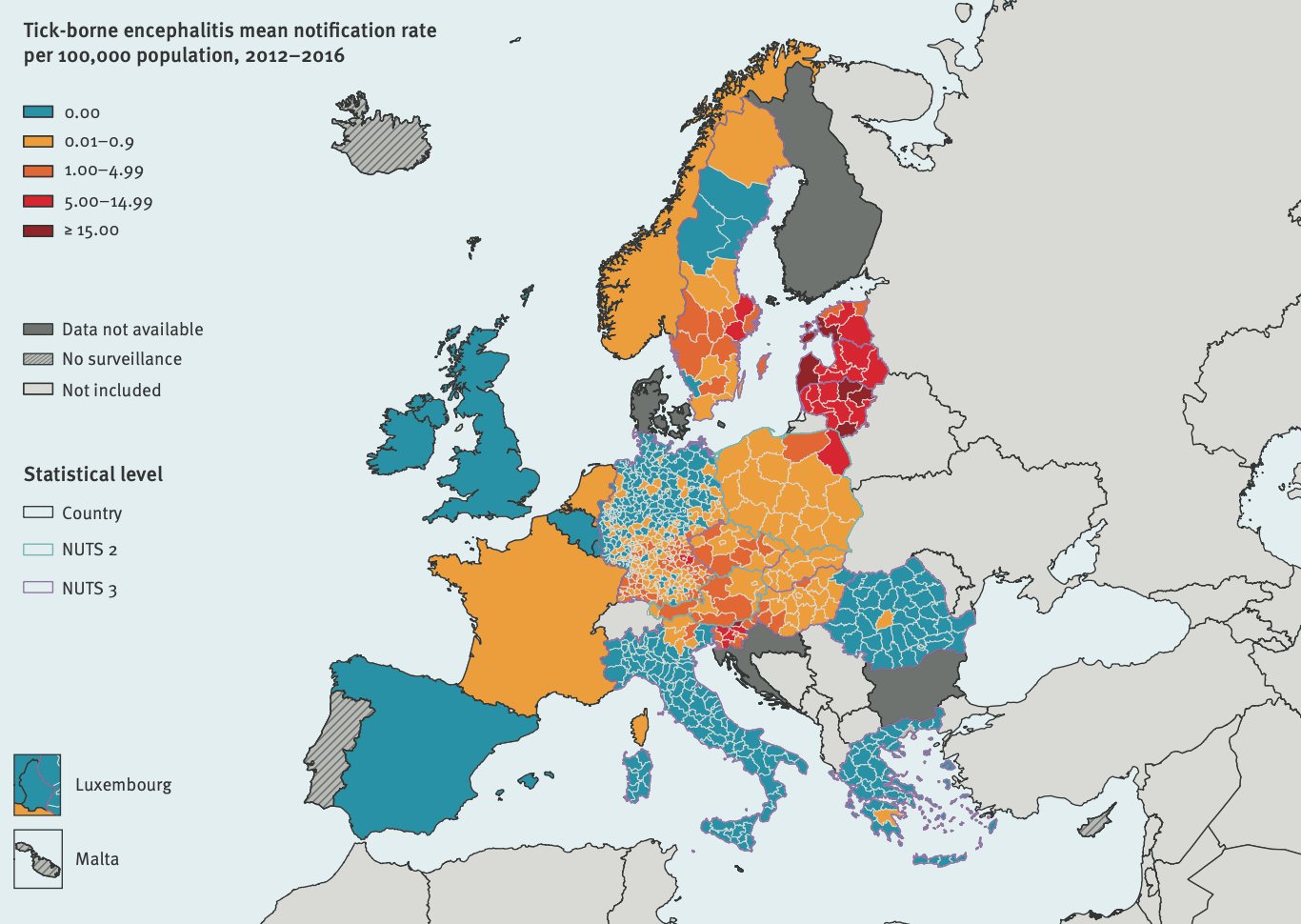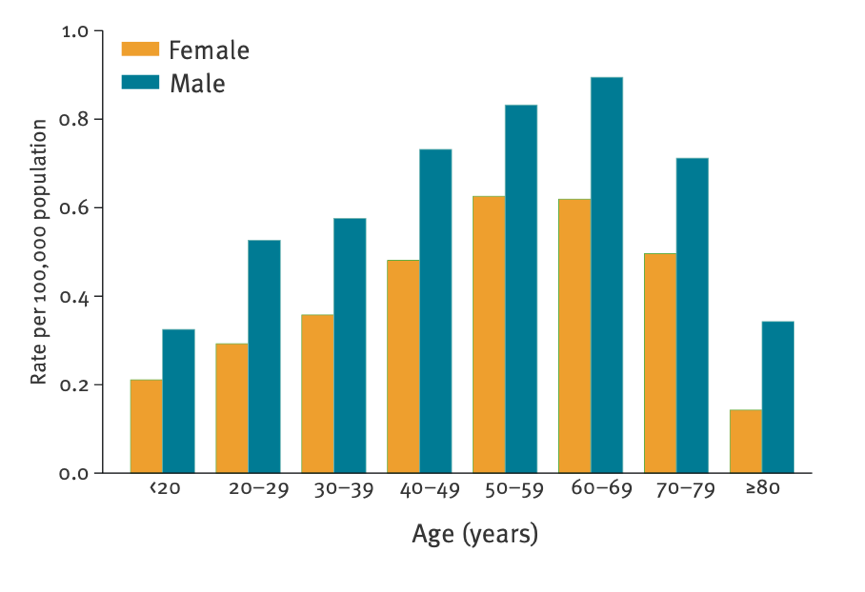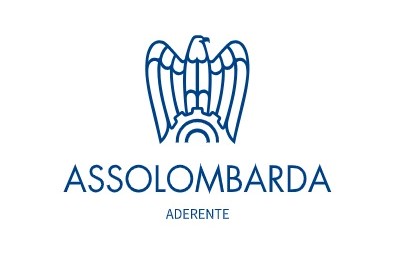Review of TBE (Tick-borne Encephalitis) cases from 2012 to 2016
Category: News - Author: Alessandro Baldissera
Tick-borne encephalitis (TBE) is an infectious disease of the central nervous system caused by a flavivirus and usually transmitted by the bite of a tick of the Ixodes spp. genus.
These ticks can be found from Western Europe to Japan.
The typical course of the disease is biphasic. After a median incubation period of 8 days, the first stage consists of a few days of non-specific symptoms such as fever and muscle fatigue.
Review of data reported in Europe between 2012 and 2016
The review data comes from EU reports from 23 European countries.
Between 2012 and 2016, as many as 12,500 TBE cases were reported, of which 11,623 (93.0%) were confirmed cases and 878 (7.0%) were probable cases.
About 95% of the cases were hospitalised and the overall case fatality rate was 0.5%.
The Czech Republic and Lithuania alone account for 38.6% of all reported cases in Europe.
Lithuania, Latvia and Estonia had the highest notification rates in the 2012-2016 period.

Of the 23 countries that reported cases of TBE, 16 had average reporting rates of less than 1 case of tick-borne encephalitis per 100,000 inhabitants.
ECDC. Map produced on: 19 July 2018
Of the 12,470 cases reported (with age information), 6,782 (54.4%) are in the 40-69 age group, and reporting rates increase with age in both sexes, peaking at 0.89 cases per 100,000 population in males aged 60-69, and then decreasing in the older age groups.

This is most likely related to an age when individuals have more time for outdoor recreation.
Nearly 95% of reported TBE cases were hospitalised.
Of the 9,889 cases reported with a known outcome, 0.5% had an unfavourable outcome (death) and 2.5% of the total had neurological consequences.
The mortality rate does not change significantly according to gender but is higher in older age groups.
Among the 5,205 cases with known vaccination status, as many as 97.3% were unvaccinated, while the remaining 2.7% received an incomplete or unknown vaccination cycle.
The overall TBE notification rate remained stable in the 2012-2016 period. Surveillance at European level has helped to provide reliable and comparative data, allowing better mapping of disease risk at both national and sub-national levels.
In previous years in Europe, the number of cases reported between 1990 and 1994 increased. This trend remained stable over the next 15 years. In 2013, several European countries experienced a spike in TBE cases, leading to the highest number of tick-borne encephalitis cases ever observed in Europe.
An analysis conducted in eight European countries suggested that human behaviour related to good weather conditions, e.g. increased outdoor recreation, was the main explanation for the spike.
All countries with an average annual reporting rate of more than 1 TBE case per 100,000 inhabitants showed a stable trend. An increase was only observed in Finland and France.
In France, the notification rate almost tripled in 2016 compared to previous years, particularly in the Alsace region, while a significant decrease was observed in Hungary.
However, the reasons for this increase have yet to be determined.
An analysis of epidemiological patterns of TBE in Lithuania suggested different trends among counties, with more pronounced increases in the eastern and northern parts of the country.
Similarly, in Austria, diverging trends between regions were reported.
A downward trend was observed in north-eastern Lower Austria, while alpine regions in western Austria became highly endemic.
A study in Sweden also suggested that milder winters are associated with a higher incidence of TBE. Indeed, cases of tick-borne encephalitis followed a marked seasonality: most cases occurred during the warmer months of May to October, probably due to people's habits as they spend more time outdoors where tick concentrations are higher.
However, cases of infection are possible during the colder months, especially in Central Europe.
Conclusion
Vaccination remains the most effective protective measure against TBE.
Increased awareness of TBE is needed to improve vaccination coverage in travellers and to promote best practices to avoid tick bites.
Currently, the WHO recommends vaccination for travellers who are at risk of exposure to TBE during outdoor activities in rural endemic areas.
Countries where the disease is highly endemic should consider strengthening information campaigns on preventive measures against tick bites, as well as introducing recommendations for TBE vaccines if they have not been already proposed.
Bibliography
Beaute' J., Spiteri G., Warns-Petit E., Zeller H. Tick-borne encephalitis in Europe, 2012 to 2016. Surveillance and outbreak report. Eurosurveillance. Article submitted on 18 Apr 2018 / accepted on 16 Aug 2018 / published on 08 Nov 2018.





